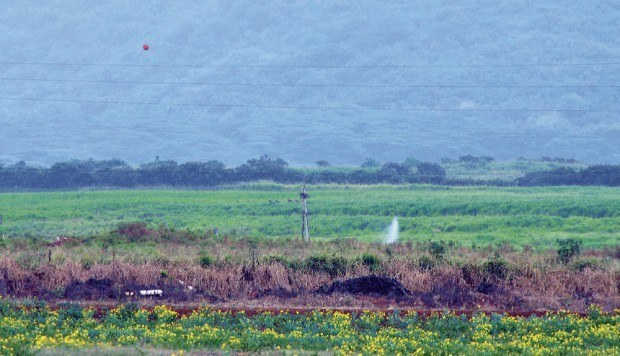LIHU‘E — Acquiring land has largely been the hitch in attempts to start up renewable energy facilities in Hawai‘i, and the difficulties are only exacerbated by current subdivision requirements, Rep. Mina Morita says. Intending to eliminate the “subdivision process,” especially
LIHU‘E — Acquiring land has largely been the hitch in attempts to start up renewable energy facilities in Hawai‘i, and the difficulties are only exacerbated by current subdivision requirements, Rep. Mina Morita says.
Intending to eliminate the “subdivision process,” especially when renewable energy facilities “only need a parcel of land,” House Bill 2450 is “critical for Kaua‘i,” Morita, a Democrat representing district that spans from Hanalei from Kapa‘a and one of the bill’s seven introducers, said during last month’s Apollo Kaua‘i meeting.
The purpose of Act 173, passed last year, was to facilitate financing and development of renewable energy projects by exempting landowners from “formal subdivision approval” by allowing leases, easements, mortgages and other conveyances, but is limited to solar energy facilities on land with poor agricultural productivity or wind energy facilities located within a conservation state land use district, according to the legislation.
HB 2450, if passed, would expand Act 173’s applicability to include any renewable energy facilities on agricultural land approved by the Land Use Commission and county Planning Commissions, and renewable energy facilities on conservation land permitted by the state Board of Land and Natural Resources.
The current process is “very involved and time-consuming,” Pacific Light and Power CEO Dick Roth said Thursday. The solar thermal company recently signed a lease for 100 acres of sub-par farmland — classified B — located between Kekaha and Waimea.
“Renewable energy production facilities, especially solar and biomass, will compete with agriculture for lands in sunny, flat areas,” Roth wrote recently in testimony. “In some cases, those lands are classified D or E, and are not affected by this bill. But some of those lands will be A, B or C.”
The A-to-E agricultural rating scale is based upon a formula that weighs soil profile, texture of the surface horizon, slope of the land, damaging winds and rainfall, according to the state Land Study Bureau.
Pacific Light and Power’s project was delayed for several months after “subdivision provisions jumped in” as he attempted to subdivide two 50-acre plots of land from a larger parcel.
“Both landowners balked at the need to subdivide,” Roth wrote in his testimony. “Pacific Light and Power balked as well at the lengthy, costly and time-consuming process of subdivision.”
The final solution was to prepare condominium property regimes for the property, Roth said Thursday.
And there is always the possibility “the lease may be terminated if in fact this solution is not a solution,” he wrote in the testimonial.
Once a piece of property is subdivided, “it can’t be undone,” he explained as to why landowners are often hesitant about the process. Power plants have a limited lifespan to them and “will run their course” and the landowner might want something else to be placed there at that time.
The requirement for land to be subdivided “creates a hindrance for the landowners and the person wishing to develop the project,” Roth said.
This is “definitely” slowing down the process of bringing renewable energy to the island, he said Thursday. “There’s no question about it.”
Every renewable utility company “will have to go through the same challenge,” and there is no guarantee they will even make it through the process, Roth said.
“Mina’s solution is wonderful,” he added. Anything zoned agricultural can waive the subdivision process and take the entire step out of the process so you don’t have to reclassify the land forever.
On the other hand, state Board of Agriculture Chair Sandra Lee Kunimoto does not agree as readily with the bill’s feasibility, according to her written testimony.
“Agricultural production is the primary use of these exempted subdivided lands, and few, if any, improvements are allowed on the subdivided lots,” she said. “We recall from past legislative sessions that other counties have expressed concern about safety issues such as access of emergency vehicles onto substandard roads within exempt subdivisions.”
On Thursday, the bill was passed on second reading and placed on the calendar for third reading. The companion legislation in the state Senate, Senate Bill 2411, was referred to two committees last month.
For more information on HB 2450 or SB 2411, visit www.capitol.hawaii.gov.
• Coco Zickos, business and environmental writer, can be reached at 245-3681 (ext. 251) or czickos@kauaipubco.com.


